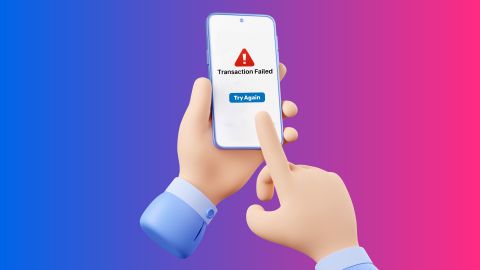Dive into internet protocols such as IPv4, IPv6, and FTP. Learn their differences, how they work in networking layers, and their real-world applications.
Internet protocols explained
-
-
Internet protocols (IPs) are a set of rules and standards that govern how data is transmitted and received over the Internet. They ensure seamless communication between devices, defining how information packets are addressed, routed, and delivered. Common internet protocols include IP (Internet Protocol), HTTP (Hypertext Transfer Protocol), and DNS (Domain Name System), each serving specific roles to maintain connectivity and data exchange. Customers can easily make their broadband bill payments with Bajaj Pay, the BBPS platform on Bajaj Finserv, seamlessly and effortlessly.
The evolution of internet protocols
Internet protocols have evolved significantly since the inception of the internet in the 1960s. The first major protocol, NCP (Network Control Protocol), was replaced by TCP/IP in the 1980s, which laid the foundation for the modern Internet. As internet usage expanded, IPv4 became the standard for addressing devices.
However, its limitations in address capacity led to the development of IPv6, offering a vastly larger address space and enhanced security features. Additionally, advancements like HTTPS and DNSSEC have strengthened security and reliability, meeting the demands of a rapidly growing online ecosystem.Key Internet protocols and their functions
IP (Internet Protocol): Provides unique addresses for devices and routes data packets.
1. TCP (Transmission Control Protocol): Ensures reliable data transmission by checking errors and sequencing packets.
2. HTTP/HTTPS (Hypertext Transfer Protocol): Facilitates web communication and secure browsing.
3. FTP/SFTP (File Transfer Protocol): Allows transfer of files between devices securely.
4. DNS (Domain Name System): Translates human-readable domain names into IP addresses.
5. SMTP (Simple Mail Transfer Protocol): Manages email sending and routing.
6. SNMP (Simple Network Management Protocol): Monitors and manages network devices.
7. SSH (Secure Shell): Provides encrypted remote access to devices.How Internet protocols work
Internet protocols function through a set of predefined steps:
1. Addressing: Assigns unique IP addresses to devices for identification.
2. Data fragmentation: Splits large data into smaller packets for efficient transmission.
3. Routing: Uses routers to find the optimal path for packet delivery.
4. Error checking: Employs protocols like TCP to ensure data integrity.
5. Reassembly: Combines packets at the destination to recreate the original data.Comparison of IPv4 and IPv6
Feature IPv4 IPv6 Address Space 32-bit (4.3 billion addresses) 128-bit (3.4×10³⁸ addresses) Security Basic; relies on external methods Built-in encryption and authentication Header Complexity Simple More complex with additional fields Configuration Manual or DHCP Auto-configuration supported Common types of Internet protocols
HTTP and HTTPS: HTTP (Hypertext Transfer Protocol) enables data exchange on the web, such as loading web pages. HTTPS adds encryption for secure transactions, protecting sensitive data like passwords and payments.
FTP and SFTP: FTP (File Transfer Protocol) facilitates transferring files between systems. SFTP (Secure File Transfer Protocol) enhances this process by encrypting the data for secure file sharing.DNS and its role in internet protocols
DNS (Domain Name System) acts as the internet’s directory, converting domain names like “google.com” into IP addresses. It ensures users can easily access websites without memorising numeric IPs.The role of IP in networking layers (OSI and TCP/IP Models)
Internet protocols play vital roles in networking frameworks like the OSI (Open Systems Interconnection) and TCP/IP models.
OSI model: IP operates at the Network Layer, handling packet routing and addressing.
TCP/IP model: It supports the Internet Layer, enabling communication across diverse networks.
In both models, protocols like TCP ensure reliable delivery, while application-layer protocols (e.g., HTTP) enable user interactions.Security protocols: Enhancing Internet Safety
1. SSL/TLS: Encrypts web traffic, securing online communications.
2. HTTPS: Ensures safe browsing by integrating SSL/TLS.
3. IPSec: Encrypts and authenticates IP packet exchanges.
4. VPN (Virtual Private Network): Masks IP addresses for private browsing.
5. Two-Factor Authentication (2FA): Adds an extra layer of security during logins.Applications and uses of internet protocols in daily life
- Browsing the web: Protocols like HTTP and DNS ensure seamless access to websites.
- Online transactions: HTTPS and TLS secure payments and sensitive data exchanges.
- File sharing: FTP and SFTP support data transfers for work and personal use.
- Streaming: Protocols like RTP (Real-time Transport Protocol) enable smooth media streaming.
Emerging Trends in Internet protocols
1. Quantum-safe protocols: Ensuring security against quantum computing threats.
2. IPv6 expansion: Increasing adoption for better scalability and security.
3. 5G integration: Optimising protocols for faster, low-latency networks.
4. AI in protocol management: Automating optimisation and error detection in networks.Challenges and limitations of current Internet protocols
- Address shortages: IPv4 still dominates, limiting scalability.
- Security vulnerabilities: Older protocols lack modern encryption methods.
- Latency issues: Inefficiencies in routing can delay data transmission.
- Complex configuration: Advanced protocols require skilled management.
-
Recharge and Pay Bills
Mobile Prepaid
Mobile Postpaid
Broadband Bill Payment
Electricity Bill Payment
Bajaj Finserv App for All Your Financial Needs and Goals
Trusted by 50 million+ customers in India, Bajaj Finserv App is a one-stop solution for all your financial needs and goals.
You can use the Bajaj Finserv App to:
You can use the Bajaj Finserv App to:
- Apply for loans online, such as Instant Personal Loan, Home Loan, Business Loan, Gold Loan, and more.
- Explore and apply for co-branded credit cards online.
- Invest in fixed deposits and mutual funds on the app.
- Choose from multiple insurance for your health, motor and even pocket insurance, from various insurance providers.
- Pay and manage your bills and recharges using the BBPS platform. Use Bajaj Pay and Bajaj Wallet for quick and simple money transfers and transactions.
- Apply for Insta EMI Card and get a pre-approved limit on the app. Explore over 1 million products on the app that can be purchased from a partner store on Easy EMIs.
- Shop from over 100+ brand partners that offer a diverse range of products and services.
- Use specialised tools like EMI calculators, SIP Calculators
- Check your credit score, download loan statements and even get quick customer support—all on the app.
Frequently asked questions
What are the main differences between IPv4 and IPv6?
IPv4 and IPv6 are internet protocols used for identifying devices online. IPv4 uses a 32-bit address format, allowing about 4.3 billion unique addresses, while IPv6 uses a 128-bit format, offering an almost unlimited number of addresses (3.4×10³⁸). IPv6 also provides better security, auto-configuration capabilities, and improved routing efficiency compared to IPv4.
How does the DNS protocol work in internet communication?
The DNS (Domain Name System) translates human-readable domain names (e.g., example.com) into IP addresses (e.g., 192.0.2.1) that computers use to communicate. When you enter a website URL, your browser sends a query to a DNS server, which returns the corresponding IP address, enabling the connection to the requested site.
What role does HTTPS play in ensuring secure online transactions?
HTTPS (Hypertext Transfer Protocol Secure) encrypts data transmitted between your browser and a website using SSL/TLS protocols. This encryption protects sensitive information, such as login credentials and payment details, from being intercepted by hackers, ensuring secure online transactions and protecting user privacy.
Why is IPv6 adoption important for the future of the internet?
IPv6 is crucial due to the exhaustion of IPv4 addresses caused by the rapid growth of internet-connected devices. It offers a significantly larger address space, enhanced security features, and better support for emerging technologies like IoT (Internet of Things), ensuring the Internet’s scalability and reliability.
What is the difference between TCP and UDP in internet protocols?
TCP (Transmission Control Protocol) ensures reliable, error-checked delivery of data packets, making it ideal for applications like file transfers and web browsing. UDP (User Datagram Protocol), on the other hand, is faster but does not guarantee delivery or order, making it suitable for real-time applications like streaming and online gaming.
Show More
Show Less




